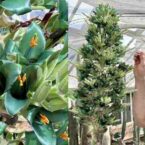
The Arctic polar vortex, a colossal ocean current characterized by its clockwise flow and wind speeds reaching up to 155 miles per hour, has been a subject of increasing concern due to the accelerating impacts of climate change. Over the past few years, this natural phenomenon has been growing in intensity at an alarming rate. However, the most recent development has sent shockwaves through the scientific community: the vortex has begun spinning in the opposite direction. This unexpected reversal, observed since March 4, has sparked discussions and raised questions about the potential consequences for global weather patterns. Scientists, who have long scrutinized the behavior of the polar vortex, attribute such deviations to rapid temperature increases in the stratosphere, a phenomenon witnessed earlier this year with temperatures soaring by approximately 90°F within a matter of days.

While there is some hope that the vortex will revert to its usual clockwise motion as indications from NOAA’s polar vortex blog suggest a slowing down of winds, the episode underscores the precarious nature of our planet’s climate system. Past disturbances to the polar vortex have yielded far-reaching weather impacts across the globe, exemplified by the 2019 cold front that plunged the Midwestern United States into a deep freeze after the vortex splintered into smaller currents. As climate change intensifies, the frequency and severity of such disruptions are expected to escalate, with potentially catastrophic implications for weather-related natural disasters like hurricanes and tornadoes. The narrative serves as a poignant reminder of the urgent need to combat climate change and mitigate the harm inflicted upon our fragile planet.


Laverne Biser’s remarkable journey as a solar eclipse chaser has captivated the world, especially as he gears up for his 13th eclipse at the age of 105. Born just years after the Titanic’s tragic sinking, Biser has defied the odds of longevity and embraced his passion for astronomy with fervor. From his first eclipse in 1963 to traversing continents to witness these celestial events, Biser’s love for the cosmos has taken him on adventures spanning decades. Armed with a keen eye for photography, he immortalizes these breathtaking moments, including a cherished snapshot from the 1979 eclipse in Williston, South Dakota. Beyond his eclipse pursuits, Biser’s craftsmanship shines through his handmade telescopes, a testament to his lifelong dedication to the stars.

As the anticipation for the Great American Eclipse on April 8, 2024, builds, Biser shares invaluable advice garnered from a century of experience. Emphasizing the unparalleled beauty of totality, he urges spectators to savor every moment, reminding them of the importance of eye protection throughout the event. Reflecting on his remarkable journey, Biser attributes his longevity to a simple yet disciplined lifestyle devoid of vices, punctuated with plenty of chocolate milk-induced laughter. His story resonates deeply, inspiring discussions on platforms like Reddit, where users marvel at his resilience and zest for life, sparking conversations about chasing dreams and embracing passions regardless of age.

In the wake of the 2011 tsunami that devastated Japan, Yasuo Takamatsu’s life was forever altered when his beloved wife, Yuko Takamatsu, was swept away by the merciless waves. Unable to accept her absence, Yasuo embarked on a relentless quest to find her, a journey that led him to the depths of the ocean. Learning to dive at the age of 56, Yasuo defied the odds and braved the vast expanse of water, determined to reunite with his lost love. Despite the daunting challenges posed by the ocean’s unpredictable nature, Yasuo remained resolute, diving hundreds of times in search of Yuko’s remains. Each descent into the abyss brought him closer to her memory, as he confided to The New York Times, “I feel closest to her in the ocean.” His unwavering devotion serves as a poignant reminder of the enduring power of love, transcending even the darkest of depths.

The bond shared between Yasuo and Yuko was forged in the simplicity of everyday life, blossoming into a love story that defied tragedy and time. Meeting in 1988 through serendipitous circumstances, their connection deepened over shared moments of joy and quiet intimacy. Yuko, a gentle soul with a passion for classical music and watercolor painting, left an indelible mark on Yasuo’s heart. When tragedy struck, Yasuo scoured the landscapes of their past, searching for any trace of his beloved. Yet, it was the vastness of the ocean that held the key to unlocking closure. With the help of a local diving instructor, Yasuo embarked on a journey of both physical and emotional depth, navigating the complexities of grief amidst the unforgiving currents of the sea. His unwavering determination has not only captivated filmmakers worldwide but also serves as a testament to the enduring power of love in the face of unimaginable loss.


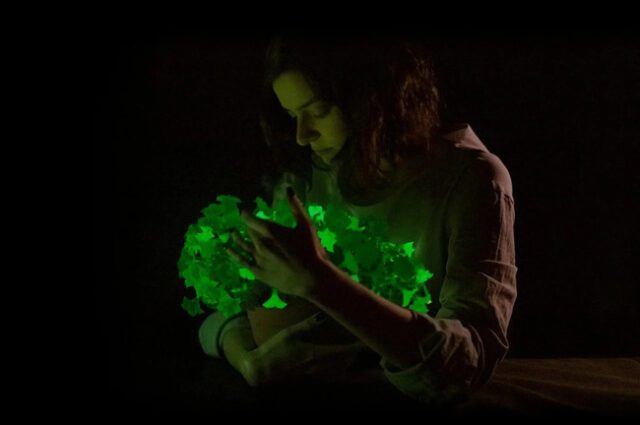
The emergence of glow-in-the-dark petunias represents a potential revolution in indoor gardening, offering enthusiasts a captivating new dimension to explore within their homes. As the trend of indoor gardening surged over the past few years, driven by a desire to combat monotony and find solace in nurturing greenery amid confinement, enthusiasts have sought ways to enhance the visual appeal of their indoor landscapes. While traditional indoor plants add vibrancy during the day, their charm often fades into darkness, prompting the need for artificial lighting solutions that incur additional costs. Enter the Firefly Petunia, a groundbreaking creation that imbues plants with the natural ability to emit an enchanting glow after sundown. This innovation not only eliminates the need for external lighting but also introduces an element of magic and wonder to indoor spaces, captivating both plant enthusiasts and casual observers alike.

The Firefly Petunia represents a significant leap forward in bioluminescent plant breeding, combining the genetic traits of a glowing mushroom with those of a tobacco plant to achieve dazzling results. Unlike previous attempts, this innovation seamlessly integrates glowing capabilities into a popular garden flower, making it accessible and practical for indoor cultivation. Moreover, the bioluminescence serves as more than just a visual spectacle; it also offers valuable insights into the plant’s health and growth patterns. As the plant thrives under proper care and sunlight exposure, its luminosity serves as a barometer of vitality, with brighter glows indicating robust growth. This fusion of aesthetics and functionality underscores the potential for further advancements in bioluminescent plant varieties, promising a future where homes are transformed into nocturnal wonderlands adorned with a kaleidoscope of glowing flora. With ongoing research aimed at expanding the color range and species compatibility, the journey toward a fully illuminated indoor garden seems both inevitable and thrilling.
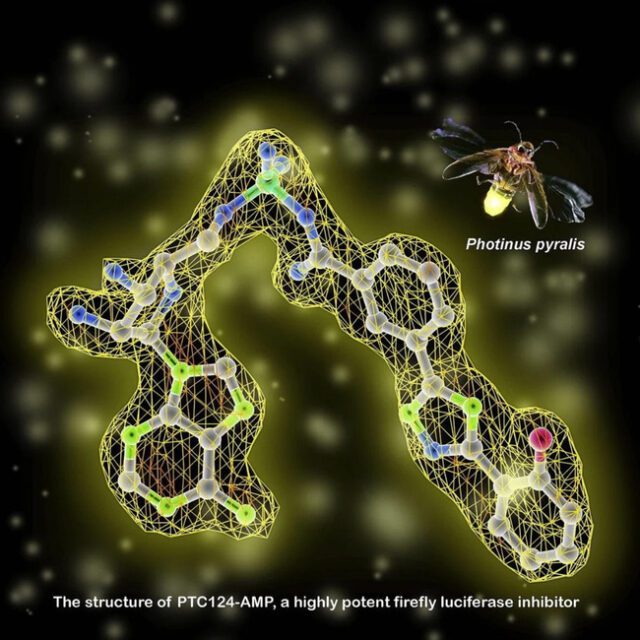
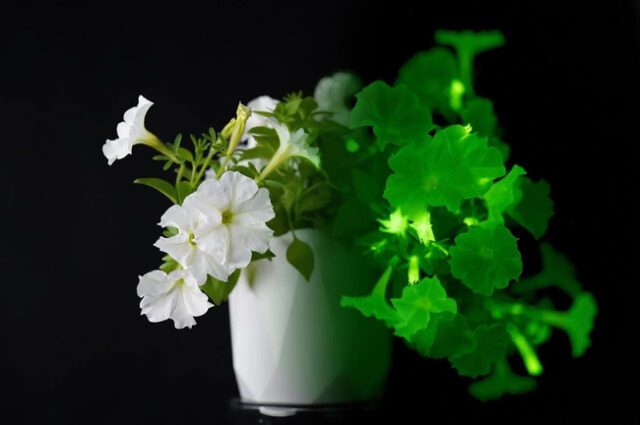



Amidst the concrete jungle of Singapore, an unexpected tale of conservation success unfolds, centered around the plight of the critically endangered straw-headed bulbul. Targeted by poachers for its melodious song, this species faced the brink of extinction in its native habitats across Southeast Asia. However, Singapore emerged as an unlikely stronghold for this delicate bird, thanks to the dedication of environmentalists like Ho Hua Chew and organizations such as Nature Society Singapore. Through concerted efforts spanning decades, pockets of wetlands, offshore islands like Pulau Ubin, and green spaces within the city-state have provided sanctuary to a thriving population of around 600 straw-headed bulbuls.
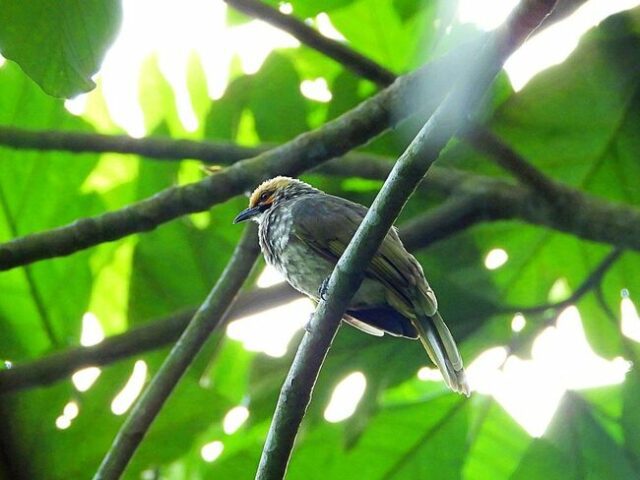
The story of the straw-headed bulbul in Singapore showcases the power of proactive conservation measures and community involvement. Advocacy efforts led to the designation of Pulau Ubin as a Nature Area in 1993, securing vital habitat for the endangered bird amidst rapid urban development. Singapore’s Red Data Book recognized the bird’s perilous status, prompting legislative action to protect it under the Endangered Species Act of 2006. Today, the collaborative efforts of the Straw-Headed Bulbul Working Group, comprising the National Parks Board and Nature Society Singapore, ensure the continued well-being of this avian species. As populations thrive and genetic diversity is safeguarded, Singapore’s straw-headed bulbuls may serve as a beacon of hope for restoring dwindling populations elsewhere, illustrating the resilience and impact of conservation initiatives in unexpected urban environments.

A groundbreaking solar-powered desalination system heralds a new era in sustainable water production, offering a promising solution to the pressing global challenge of water scarcity. Developed by a collaborative team of researchers from King’s College London, MIT, and the Helmholtz Institute for Renewable Energy Systems, this innovative technology provides a reliable source of fresh drinking water without relying on direct sunlight. Utilizing the principles of electrodialysis, the system efficiently separates salt from water, producing clean drinking water irrespective of variable solar conditions. Through extensive field tests in rural communities, the researchers demonstrated not only the efficacy of their method but also its cost-effectiveness, offering a viable alternative to traditional desalination techniques.

The implications of this advancement extend far beyond providing clean water to rural areas. With over 1.6 billion people worldwide facing water scarcity, and a significant portion of groundwater being saline and unusable, the need for sustainable desalination solutions is paramount. By eliminating the dependency on grid infrastructure and reducing reliance on costly batteries, this solar-powered desalinator offers a practical and eco-friendly approach to addressing water scarcity, particularly in regions like India where the problem is acute. Moreover, its potential applications in agriculture and environmental conservation underscore its significance in mitigating the impacts of climate change and advancing towards a more sustainable future. As efforts to scale up this technology progress, it holds the promise of transforming water accessibility and resilience, offering hope for communities worldwide facing the challenges of water scarcity and contamination.

American Airlines’ recent adjustment to its pet policy marks a significant step forward in easing the stress of traveling with animal companions. With the new policy, pet owners are now permitted to bring their furry friends along with a full-size carry-on bag into the cabin, a welcome change from the previous restrictions. Formerly, travelers with pets were limited to one small bag beneath their seat or were subject to an additional fee of $35 for a second carry-on. Consequently, many opted to send their pets to the cargo hold, a less desirable option, to avoid extra expenses. This revision not only fosters greater convenience for pet owners but also holds promise in curbing the misuse of service animal claims, as travelers no longer face the burden of excessive fees for bringing their pets on board.

Nevertheless, prospective pet travelers are encouraged to conduct thorough research prior to embarking on their journey. Each airline maintains its own set of pet policies, and aircraft capacity restrictions may apply regarding the number of pets allowed in the cabin simultaneously. Moreover, international travelers should familiarize themselves with destination-specific entry regulations for pets, which vary from country to country. Resources such as PetTravel.com offer comprehensive guidance on global pet travel requirements. Consulting with a veterinarian is also advisable to ensure the safest and most comfortable travel experience for both pets and their owners. With these preparations in place, flying with furry companions becomes not only more accessible but also more enjoyable for all involved.

The Long Table in Stroud, UK, has become a beacon of hope and support for its community through its innovative pay-as-you-can model. This restaurant and community center have garnered global attention for its unique approach to dining, where patrons simply pay what they can afford for a meal. This initiative not only provides access to healthy food for those facing financial constraints but also supports sustainability efforts by rescuing still-good food from landfills. With a commitment to inclusivity, The Long Table offers a diverse menu featuring plant-based and gluten-free options, ensuring that everyone can find something to enjoy. Beyond nourishing meals, the restaurant fosters a sense of connection and belonging, with communal long tables encouraging patrons to engage in conversations and build community ties.

Despite facing the threat of eviction due to the sale of the mill they occupy, The Long Table continues to serve its community with resilience and determination. Operation Fill-the-Mill events are underway, providing opportunities for locals to enjoy the restaurant’s offerings while supporting its mission. The outpouring of support from the community is evident in an open letter urging the new landlord to allow The Long Table to remain at Brimscombe Mill or grant them more time to find a new location. While uncertainties loom over their future, The Long Table’s unwavering impact on the community remains steadfast, showcasing the power of compassion, sustainability, and community solidarity in the face of adversity.

The Element Tiny Home, with its cozy living space and an affordable price tag of US$23,500, offers a delightful entry point into the world of micro-living. As a product of Dragon Tiny Homes, renowned for its commitment to the micro-living movement, the Element embodies simplicity and functionality. Despite its compact frame, the Element doesn’t compromise on comfort. Its interior, though modest, is well-equipped, featuring a basic kitchen unit and a snug bathroom with essential amenities. The main living area serves multiple purposes, while a loft-style bedroom provides a private retreat, albeit with a low ceiling typical of tiny homes. While the Element may lack some of the luxurious features found in larger counterparts, its affordability and charm make it an attractive option for those seeking a minimalist lifestyle without breaking the bank.

Built on a double-axle trailer and measuring a mere 16 feet in length, the Element stands out for its efficient use of space and portability. Clad in smart siding-engineered wood, it boasts a weight of around 7000 lb, making it suitable for towing with ease. Although compact, the Element offers a sense of coziness and functionality, making it ideal for individuals or couples looking to downsize or embrace a more sustainable lifestyle. While it may not accommodate large gatherings, its intimate setting fosters a sense of closeness and simplicity that resonates with the ethos of the tiny home movement. Moreover, with the option for upgrades at an additional cost, the Element provides flexibility for customization, allowing homeowners to tailor their living space to their preferences and tastes. Overall, the Element Tiny Home represents a harmonious blend of affordability, functionality, and charm, making it a compelling choice for those embracing the micro-living lifestyle.















































